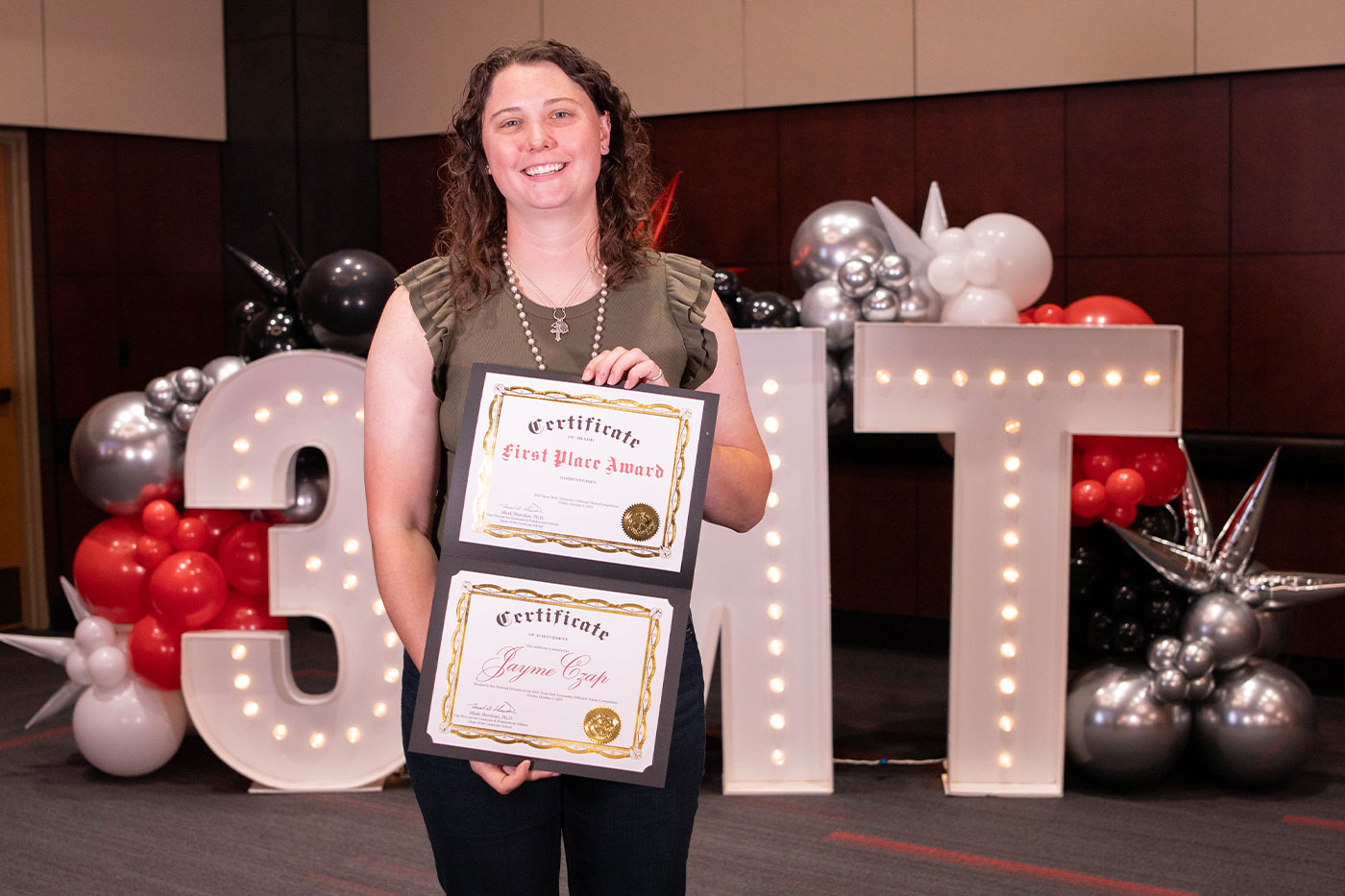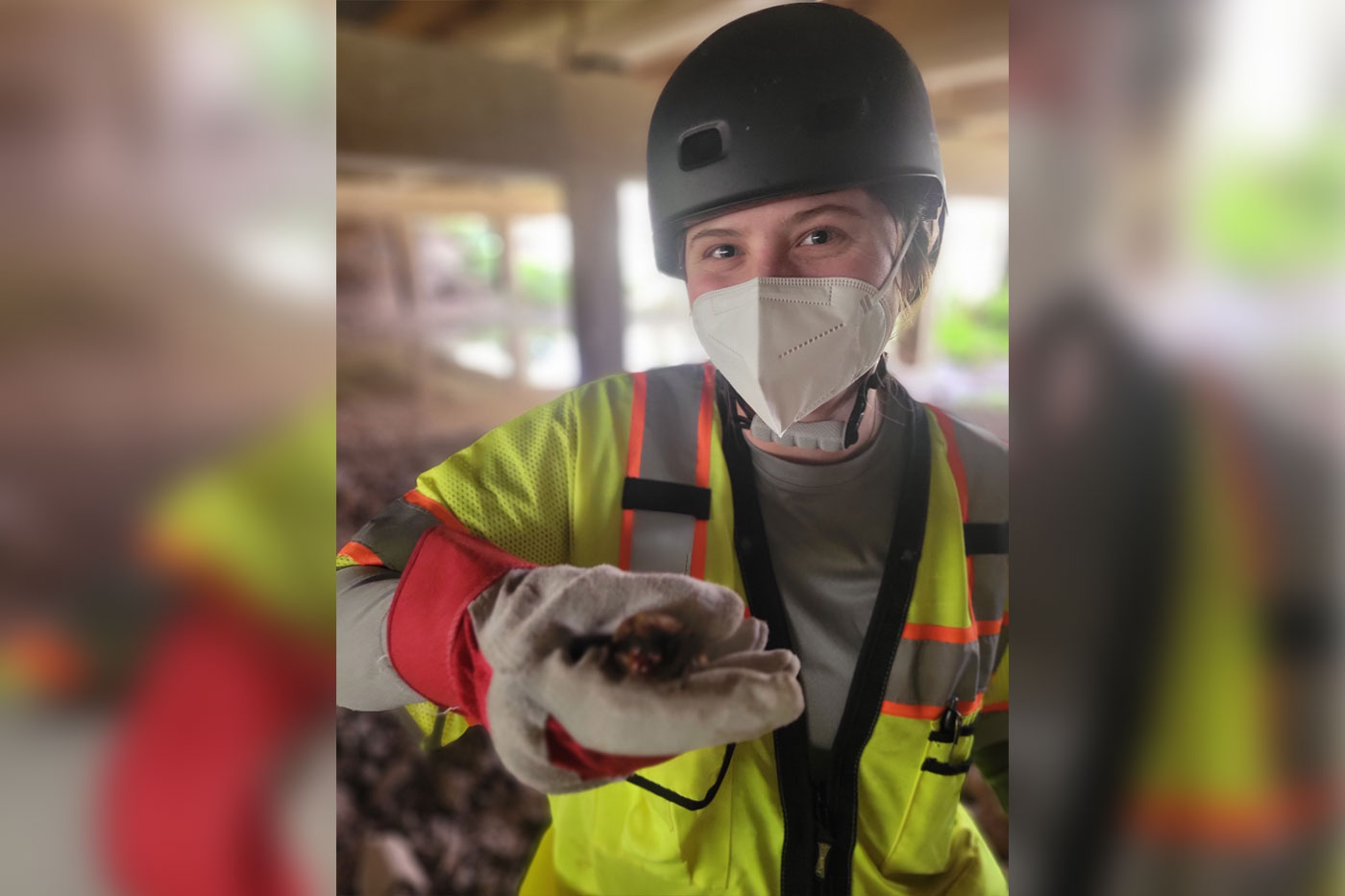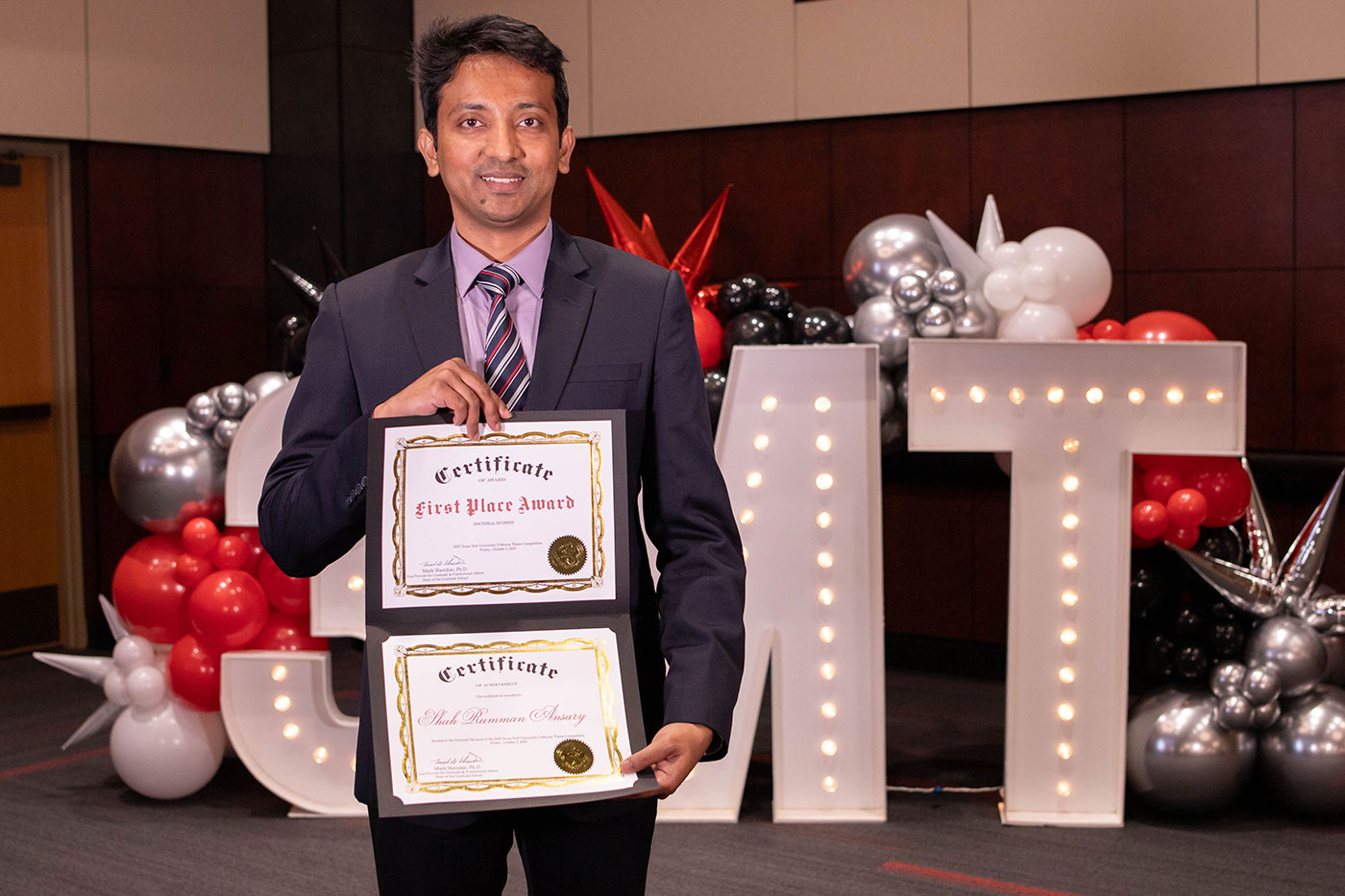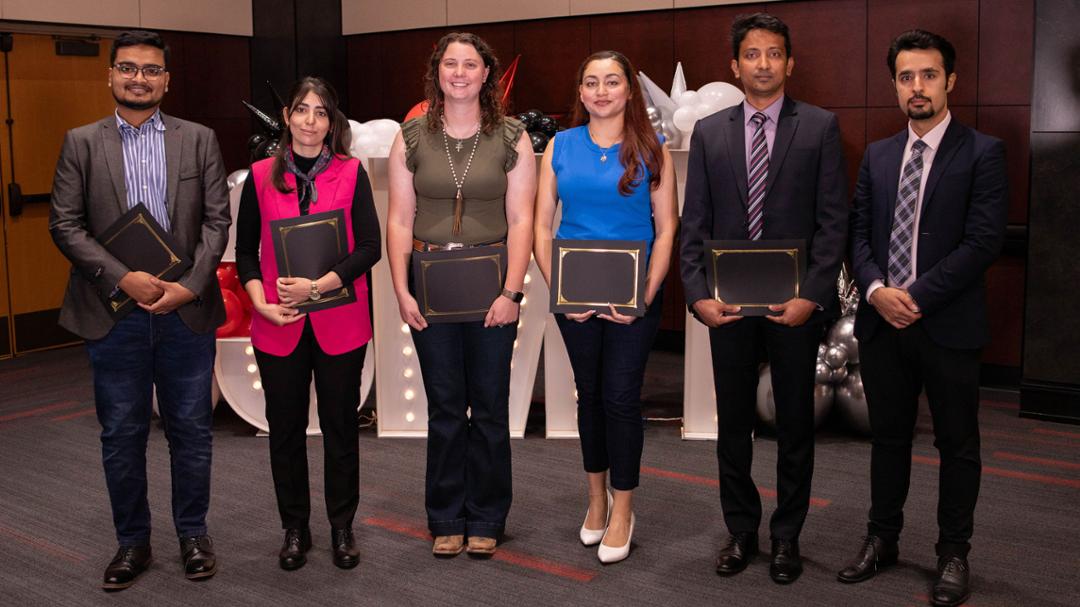The winners of the annual Three Minute Thesis Competition researched roosting habits of bats and developed a more efficient machine to drill silicon wafers for electronics.
Over the course of two days, master’s and doctoral students within Texas Tech University’s Graduate School competed in the annual Three Minute Thesis Competition.
Students condensed their research projects to a single static PowerPoint slide and presented their work in three minutes to a general, non-specialist audience.
“Graduate students are essential to the research and innovation that takes place at Texas Tech,” said Mark Sheridan, vice provost for graduate and postdoctoral affairs and dean of the Graduate School. “Our Three Minute Thesis Competition allows students to practice their presentation skills so they can explain what they did and why it’s important in a way that is easy to understand. It also showcases the graduate students’ amazing research and the lasting impacts on society.”
This year’s first-place winners were Jayme Czap and Rumman Ansary. Czap is finishing her master’s thesis at the Department of Natural Resources Management in the Davis College of Agricultural Sciences & Natural Resources. Ansary is a third-year doctoral student studying industrial engineering at the Edward E. Whitacre Jr. College of Engineering.
Together, Czap and Ansary capture the wide range and impactful research done by Texas Tech graduate students.
Roosting Habits of Bats

Czap’s research centers on the roosting habits of bats in East Texas. Specifically, she wanted to understand what made certain bridges bat-friendly.
"At night, bats go out and eat, but during the day they need to find a place to digest their food between meals," she said. “They do everything in these day roosts, like mate, hibernate or rear their young. So, these roosts have to be dark, warm and protected. It’s crucial for the bats’ survival to find a good place to roost during the day.”
Czap said the Texas Department of Transportation not only helped with funding her research but also provided information about bridges to survey in Texas.
She conducted field research, making several trips to various bridges across East Texas. Because most bridges cross bodies of water, Czap often donned waterproof waders and heavy-duty rain boots to make her way to the bats’ roosts. She even kayaked to some locations.
“Field work is the hardest part, but it’s also the most fun,” she said. “I’ve come across quicksand. I’ve gotten stuck and fallen in the mud. I’ve filled my waders. You never know what you’re going to see or what’s going to happen.”

Czap noted that humans can have a negative and positive impact on roosting options for bats. Yes, deforestation may take away natural roosting options; however, bridges, buildings and other structures can offer safe alternatives.
“In some ways, we’re actually producing more roosts for bats,” Czap said. “Bats will utilize a lot more spaces than you would expect. With my work, I think it’s important to consider that we might unnecessarily or unexpectedly be helping wildlife.”
Czap hopes to continue this work in some capacity after graduating with her master’s degree. A Ph.D. is certainly on the table, but she also sees herself consulting with landowners and helping them make building decisions that are mutually beneficial for them and for the surrounding wildlife.
Along with her first-place win in the master’s group, Czap also received the People’s Choice award from the attendees of the final round.
“I was shocked,” she said. “I signed up to just get public speaking experience. I don’t like public speaking, but I love sharing my research.”
Czap also credited her department for setting her up to do so well in the competition.
“One thing about the Department of Natural Resources Management is that I love how everyone here is very supportive,” she proudly said. “I was thankful to have my advisor and my fellow lab mates come and watch me during the finals. I don’t think I could have done any of this if it weren’t for them.”
Drilling Silicon More Efficiently

During the competition, Ansary began his three-minute presentation with a brief history lesson.
“If you look at the different ages of civilization, you will see in each age, we actually use some materials more than others,” he said. “For example, the Stone Age, the Bronze Age, the Iron Age and then the Steel Age. Right now, though we don’t necessarily call it this, we are basically going through the Silicon Age.”
Silicon is the foundation of today’s electronics and is used in semiconductors, computer chips, transistors and integrated circuits. It is a brittle material, easily prone to breaking or cracking.
To make it usable for microchips, silicon needs to be cut or drilled into the right shape or pattern.
Ansary developed a machine that vibrates the drill bit 20,000 times per second to make micro-sized holes and carve tiny patterns like grooves or channels on silicon wafers.
“If we hit silicon with force, it will break or form some kind of crack,” he said. “This ultrasonic vibration of the drill bit actually helps to penetrate the silicon easily.”
Ansary noted that ultrasonic vibration is being used for other materials like ceramics, glass and hardened steel. However, those materials and holes or cuts were larger in size.
The micro size and scale of using ultrasonic vibration on silicon wafers was the biggest challenge for Ansary, but one he was eager to take on.
“I had to spend several days studying the principles of different machines and then looked for the available items in our lab or what we could buy from some other companies,” Ansary said. “It’s the innovative part, where I’m making something. It’s the most exciting part for me.”
Ansary sees his work as being in three stages: engineering, experimental and theoretical. The first two stages – how he engineered the machine and experimented to refine it – were the basis of the competition’s presentation.
For the current theoretical stage, Ansary will look at microscopic images of the drilled silicon to better analyze cracks or any instances of heat generation. The goal is to better refine the process. In fact, his research team has already submitted a patent application for this technology.
As the winner of the doctoral group, Ansary will represent Texas Tech at the regional competition in the spring. It is his chance to showcase the real-world impact of Red Raider research.
“Texas Tech has provided the environment to help graduate students flourish,” he said. “I not only learned how to do research but how to communicate with a greater audience. This means a lot to me.”

